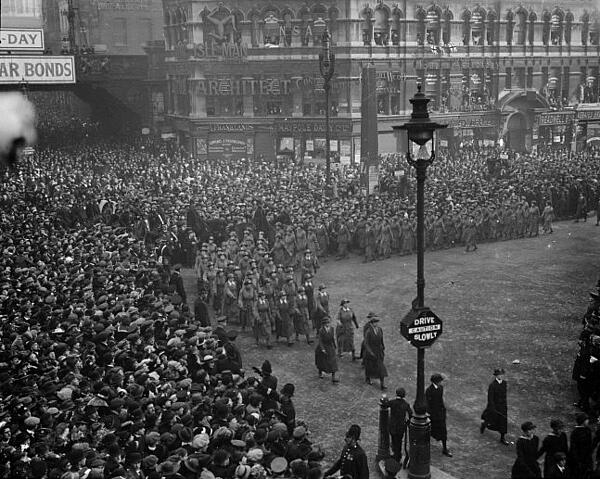The Women's Army Auxiliary Corps
The Women’s Army Auxiliary Corps (WAAC) were formed during World War One to free up experienced soldiers from the rear areas for front line services. Formally instituted on 7 July 1917, over 57,000 women served in the WAAC until the end of the war in 1918. The WAAC played a vital role in the war, but its mobilisation was also an important milestone in the push for equal rights.
On 16 January 1917, Lieutenant-General H Lawson argued that women should be able to join the army in France. Lawson argued that as women were carrying out such important work in ammunition factories, there was no reason that they shouldn’t be able to join the army.
The Adjutant-General, Sir Nevil Macready, suggested that is women were to join the army they should receive the same treatment as their male counterparts. The War Secretary, Lord Derby, largely agreed with Macready but was worried that the whole issue would stir up agitation as was witnessed before the war.

In January 1917, a well-known medical practitioner in Edinburgh, Mrs Chalmers Watson, met with Lord Derby to discuss the issue of women in the army. The issues discussed in the meeting included the pay women should receive and discipline in the Army.
Chalmers Watson then met Sir Nevil Macready to discuss future plans. Even Sir Douglas Haig had come round to the idea by the Spring of 1918 and was convinced that women could play an important role in the British Army.
Despite his support, Haig did still have concerns over whether women would be able to do the same physical labour as men in France. Although he believed they could could play a vital role in cooking or nursing, he worried they would not have the strength to do manual labour.
The WAAC was officially formed on 7 July 1917. Applicants had to have a medical, provide two references and go before a selection board before they could be considered for the WAAC.
Chalmers Watson, the Chief Commander, raised a corps of 40,850 women, of whom some 17,000 served overseas (although never never more than 8,777 at a time).
The WAAC did not have officer ranks, instead, they had controllers and administrators. NCO’s were replaced by forewomen. The controllers were usually from middle/upper class backgrounds.
Women were paid depending on the type of work they were doing. Shorthand typists could get 45 shillings a week and those members doing unskilled labour were paid 24 shillings a week.
The WAAC uniform consisted of a small, tight-fitting khaki cap, khaki jackets and skirts. Regulations stated that the skirt had to be no more than twelve inches above the ground. To maintain a high standard of fitness, all members of the WAAC had to do physical exercises every day, including morris dancing and hockey.
The WAAC was divided into four units: mechanical, cookery, miscellaneous and clerical. The War Office ensured that a member of the WAAC could only take up a job if it resulted in a man being freed up for active service. Chalmers Watson spent much of her time up against politicians and bureaucrats who saw the work of the WAAC as inferior to that of men. This inequality was reflected in the significant disparity in pay between men and women doing the same job.
Although not on combat duties, members of the WAAC endured shelling from heavy artillery and bombing raids by German aircraft. During one attack in April 1918, nine women were killed at the Etaples Army Camp.
See also: The Women's Party
MLA Citation/Reference
"The Women's Army Auxiliary Corps". HistoryLearning.com. 2024. Web.
